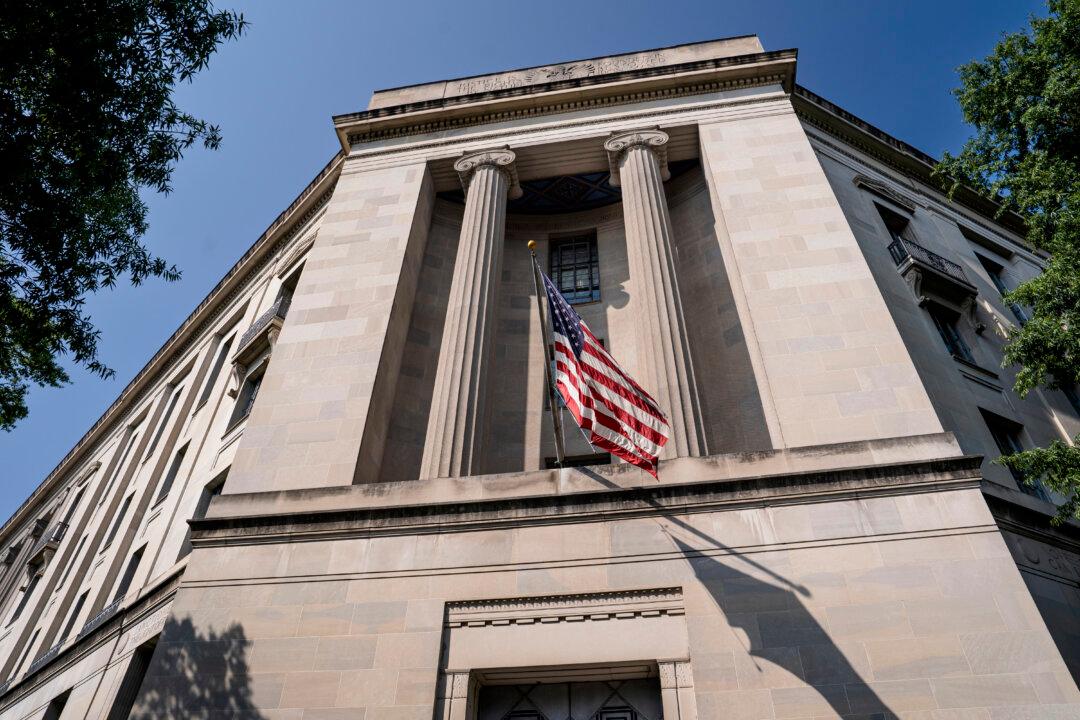The U.S. Supreme Court on Friday issued a decision that makes it harder for illegal immigrants subject to a deportation order to challenge their removal from the country on the grounds that the government sent them an initial notice to appear that lacked a time and place for their hearing even though it followed up with a second notice that contained this information.
In a 5–4 decision issued on June 14, with Justice Neil Gorsuch joining the liberal minority in dissent, the high court sided with the government in upholding the legitimacy of what amounts to a two-step notification system in the process of deporting illegal immigrants that effectively removes one basis for them to get their removal order rescinded.
The Illegal Immigration Reform and Immigrant Responsibility Act mandates that the government issue “written notice” to illegal immigrants who are either “inadmissible” or “deportable” informing them about the removal proceedings they are being subjected to.
The law requires that illegal immigrants be given a written notice to appear (NTA) that must set out, among other things, the time and place at which proceedings will be held. The regulation also stipulates that in case of any change or postponement to the time and place of such proceedings, another written notice must be provided, with the second notice having to specify the new time and place of proceedings and the consequences of failing to attend.
Illegal immigrants who have been so notified and fail to attend their hearing are ordered removed in absentia, meaning a deportation order is issued for them even though they’re absent from the hearing.
The law allows three conditions under which illegal immigrants subject to in absentia removal orders can get them canceled. The first is when they can prove that their failure to appear was due to “exceptional circumstances,” the second is when they were in federal or state custody and so couldn’t attend the hearing, and the third is if they didn’t receive a notice to appear in line with the law.
In all cases, the government eventually provided each of the illegal immigrants with a second notice that specified the time and place of the removal hearing, and an immigration judge and the Board of Immigration Appeals (BIA) refused to reopen their proceedings, prompting them to file petitions in federal court for review.
Following competing appellate court rulings on whether the second form of notification meets the statutory requirements if the government fails to specify a time and date in the first notice, the Supreme Court took up the case, heard oral arguments on Jan. 8, and decided the case on Friday.
The Arguments
In January, during oral argument, Justice Sonia Sotomayor argued that the high court already held in a separate case known as Niz-Chavez v. Garland that the notices need to be “full and complete” to be valid and that this was the “statutory presumption commanded by Congress,” who she said was aware that the government was regularly giving notices with the time and place to be announced and objected to this practice.In contrast, government attorneys argued that two separate forms should be considered valid for the purposes of ordering an illegal immigrant removed in absentia, seeking to draw a contrast with the Niz-Chavez case and the current matter before the court, arguing that it’s reasonable for the statutory notification requirement to be satisfied with a second notice that contains the time and place of proceedings.
Justice Gorsuch, who joined the liberal wing in dissent in the June 14 decision, challenged the government attorney’s argument, contending that the argument basically amounted to claiming that it’s acceptable for the government to leave off information it finds “inconvenient, like the hearing date” and taking a “trust us” approach with the law.
Justice Samuel Alito, who authored the June 14 opinion, argued that the “ordinary language” of the statute rather than its “intricacies” should reasonably be construed to allow an initial notification that lacks a time and place for the hearing so long as a subsequent one provides relevant details.
He cited the case of one of the plaintiffs whose removal proceedings began in 2001 based on an initial notification that lacked a time and date but then he received numerous follow-up notifications specifying this information and he showed up at numerous hearings.
“And you say Congress would have wanted him at this late date to be able to reopen his removal proceedings because he didn’t get a compliant NTA back in 2001?” Justice Alito asked the defense attorney.
“Yes, Your Honor,” the attorney replied.
Justice Alito then focused on the literal language of the statute, asking the defense attorney whether she was arguing that just because the first notice didn’t contain the time and place, it invalidated the entire notification procedure even though a follow-up notice stipulated this.
The attorney confirmed, comparing it to a hypothetical voter registration, where if someone didn’t fill out a voter registration form in the first place then a subsequent notification of a change in party affiliation would not be valid either.
The government attorney concluded the session by arguing that the provision’s “evident” purpose of creating a defense based on “lack of notice” should not apply to individuals who ultimately were provided with all the information about their deportation proceeding that is required by law.
A different interpretation, the government attorney argued, “is inconsistent with any rational understanding of what Congress was trying to achieve.”
The Decision
The Supreme Court’s 5–4 majority ruled in favor of the government in the consolidated case, allowing the current two-step notification process to continue on the premise that the second written notice containing the statutorily required hearing information is sufficient for an in absentia removal order.“This reading aligns with common sense,” Justice Alito wrote for the majority.
Justice Alito wrote that it’s irrelevant that the government failed to provide all the relevant details in the first notice, so long as the time and place in the second one.
“And it is that notice which the alien must prove was not provided in order to have his in absentia removal order rescinded,” the majority opinion states.
Justice Ketanji Jackson wrote the dissenting opinion, arguing that Congress intended to temper the in absentia removal powers by stipulating a process that afforded fair opportunity to get the removal order rescinded.
“Today’s cases arise because the Government persisted with its practice of issuing facially defective NTAs in the wake of our two prior pronouncements,” she wrote. “But, apparently, the third time is the charm, for the majority now finally blesses the Government’s abject noncompliance with the statute’s unequivocal command.”
Justice Jackson argued that the majority holding defies both the plain text and the context of the statute, ignores Supreme Court precedents, and “upends the careful in absentia removal framework Congress has crafted.”







